West Palm Beach’s City Commission Unanimously Approves 5400 N Flagler Condo Project
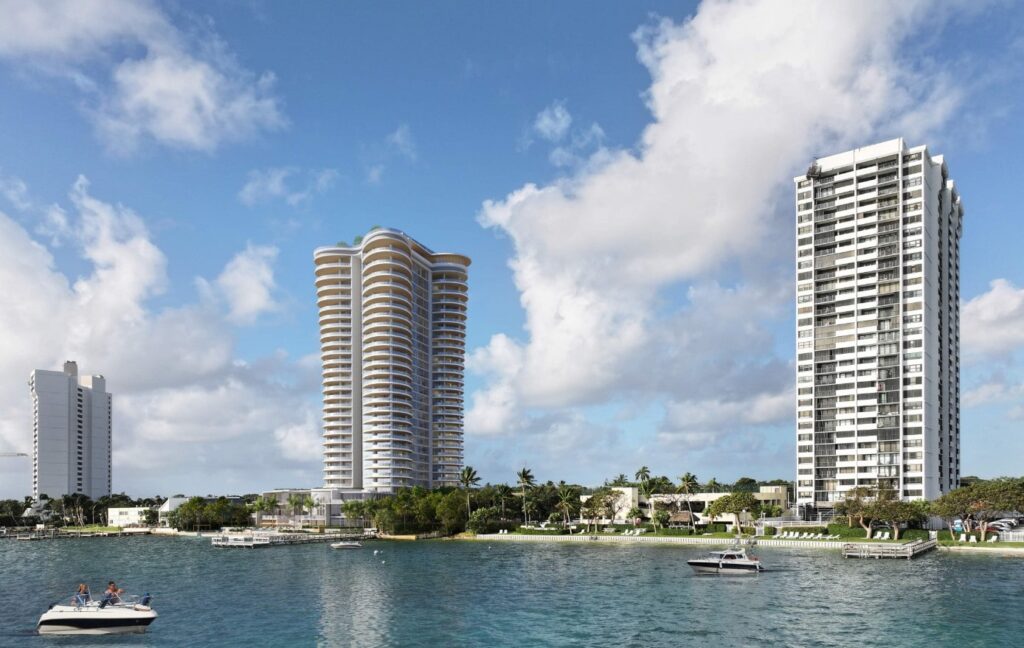
After months of review, a 31-story condo tower planned for 5400 N Flagler has cleared its final hurdle in West Palm Beach. On September 29th, West Palm Beach’s City Commission voted unanimously to approve the condo project from Canada-based Great Gulf. It will be the last step before the developer can begin permitting, considering the project had already secured unanimous support from the Planning Board. Rising on a 2.46-acre site, the tower will bring 97 condominium units and mark Great Gulf’s second condo venture in the city. Designed by Spina O’Rourke + Partners and Safdie Architects, the 380 FT tower (one of the tallest in West Palm Beach) will feature wraparound balconies, a mix of unit types, and extensive resident amenities. For instance, the building will include townhomes, two- to four-bedroom units, and penthouses, with 207 resident parking spaces. Amenities will include a rooftop pool, guest suites, event/fitness rooms, lounges, libraries, and landscaped garden areas. The project has undergone slight revisions since its submission a month ago, particularly along North Flagler Avenue. In response to concerns about a “blank wall effect” at the podium level, the developer has incorporated active residential amenities on the east side of the building, including a dog spa and a bicycle club for residents. A pedestrian sidewalk along N Flagler Drive will also be expanded, while landscaping and open space remain central to the design. The developer is requesting four waivers, covering density regulations, acreage, minimum setback requirements, and driveway requirements. Some of these requests have drawn concerns from both city staff and nearby residents. In particular, waiver 3, which seeks a reduction in minimum setbacks for the proposed high-rise, was flagged as inappropriate by staff given the building’s 380 FT height. The official position is that a structure of such height should maintain a larger buffer from neighboring properties. As a result, staff has recommended denial of this waiver, while the other three are supported. In addition, to address questions and concerns from the surrounding community, the developer held several outreach sessions with the Palm Beach Chamber of Commerce, the Northwood Harbor Association, and residents of Palm Beach House. Representatives of these groups noted that the developer was professional and transparent, was willing to adjust features of the project, and engage in discussions when concerns were raised. Even with these efforts, many residents voiced objections during the meeting. Most came from Palm Beach House, the neighboring condominium, where residents expressed concerns about dust, noise, blocked views, and potential structural damage during construction. The City Commission approved the rezoning of the property from Multifamily High Density Residential to Residential Planned Development, along with the requested waivers, despite some staff and resident concerns. With approvals in place, Great Gulf can now proceed with demolition and permitting. Construction is expected to take approximately three years, not including potential delays.
The William Launches Sales in North Miami Beach with 374 Residences
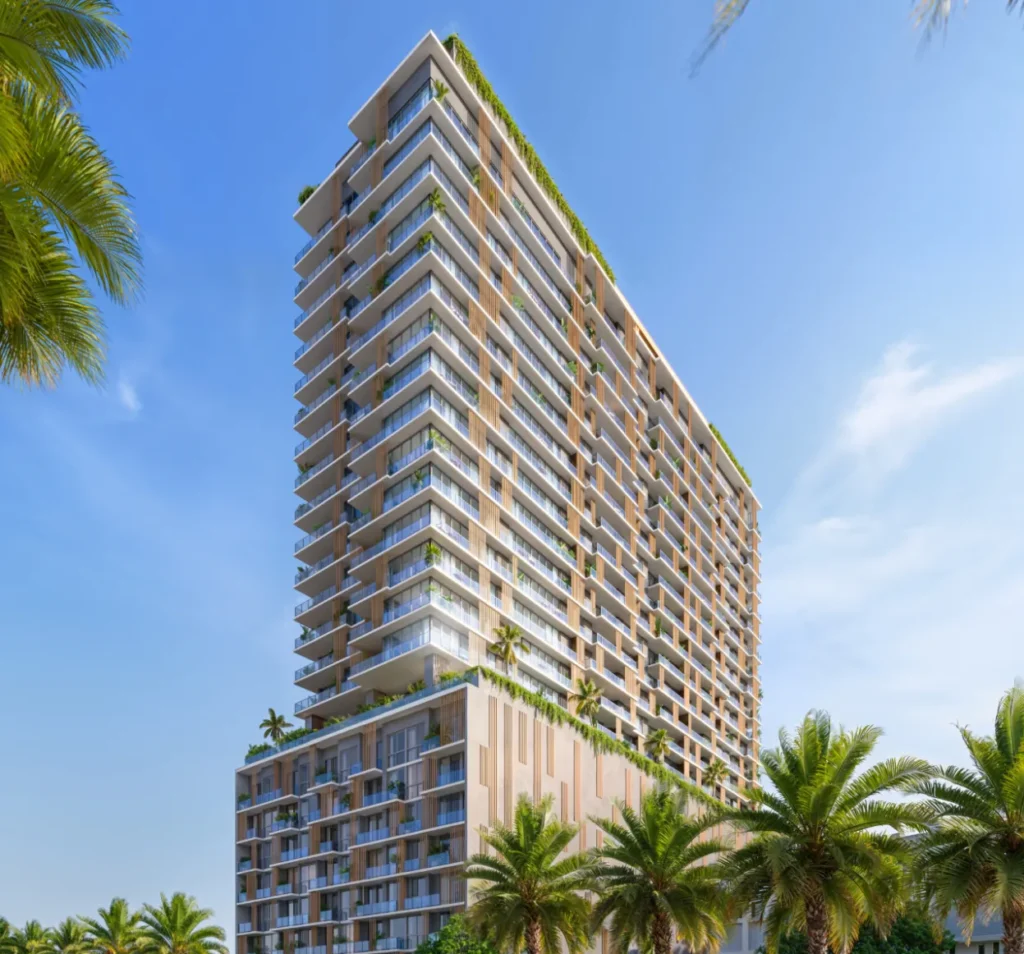
Sales have officially launched for The William in North Miami Beach, a 25-story condo tower planned by Blue Road Development and Illia Development Group. The project, which is targeting a groundbreaking in the middle of next year, will deliver 374 residences and marks Blue Road’s second condo venture in the city, following the topping out of Nexo Residences. The William is planned on a 1.1-acre site that the development team purchased in late 2022 for $7.5 million. Positioned as one of the first high-rise projects in the neighborhood, it is being marketed by Fortune International Real Estate, with EB-5 investment expected to play a role in funding the development. Units will range from studio, one-, two-, and three-bedroom layouts. According to The Real Deal, sizes will span from 552 SF studios to 1,412 SF three-bedroom condos. What stands out in the permitting documents is the unit mix: of the 374 residences, 30 are categorized as lodging units. The reason for this designation remains unclear, as the developer has stated the project will operate as long-term residences rather than short-term rentals. The building will include a plethora of amenities for residents, including a fitness center, coworking lounge, self-serve market, indoor lounge, kids’ playroom, outdoor bar and terrace, and much more. In fact, over 40,000 SF of the building is dedicated towards amenity use. In addition, the ground floor will feature 4,526 SF of retail space, along with a residential lobby and parking access. The project’s podium will span several levels, providing a total of 448 parking spaces reserved for both residents and retail patrons. Designed by Behar Font and Carlos Ott, the most recent plans submitted to the city show the tower rising 25 stories, reaching a height of roughly 270 FT. This represents a modest increase compared to the original submission, which features a 23-story building designed by Bermello Ajamil & Partners. The updated design incorporates a modern facade with wood paneling, glass balconies, and stucco finishes, giving the project a contemporary look. Because the development was only recently approved by North Miami Beach staff, the next step will involve clearing the site. This will require demolition of the existing low-rise structure as well as removal of the surface parking lots currently occupying the property.
The Satori at Lighthouse Point Planned in Pompano Beach, Set to Deliver 187 Units
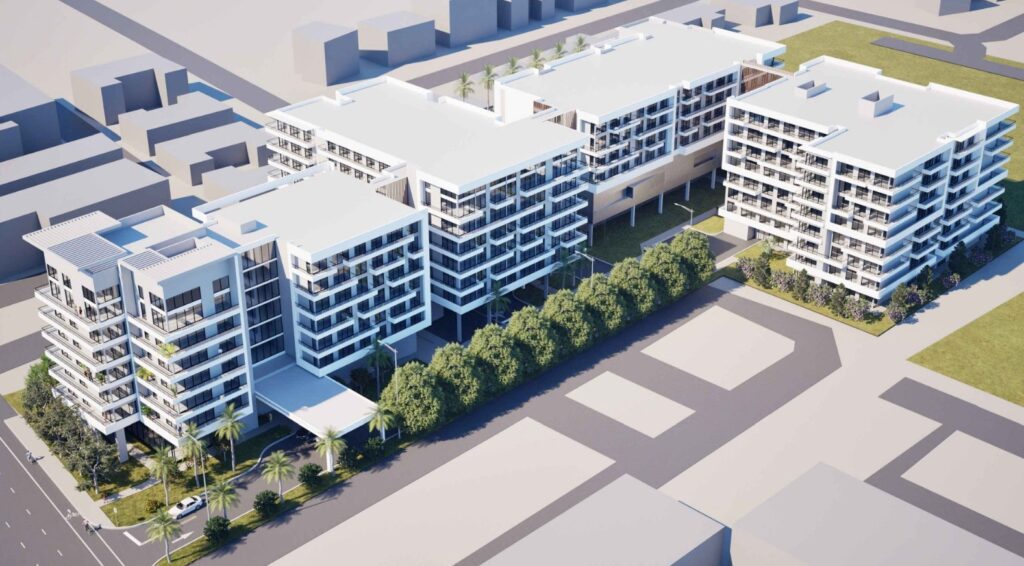
Plans have been unveiled for The Satori at Lighthouse Point, an eight-story residential development proposed in Pompano Beach. Led by South Florida–based 4211 N Fed, an affiliate of 1112 Development, the project is aiming to bring 187 units to the North Federal Highway corridor. The site at 4211 North Federal Highway was purchased by the developer earlier this year for $5.89 million, signaling continued investment in the N Federal Highway corridor. The site is currently occupied by the Lighthouse Point Hotel, a cluster of low-rise buildings that would be demolished in order to make room for the new 8-story project. The proposals envision units of various sizes, from studios, one-bedroom, two-bedroom, and three-bedroom apartments. According to a representative of the project, units will be directed towards “young professionals, families, and even seasonal residents”. Apartments will be moderately sized, ranging from 814 SF at the lowest, to 1,811 SF at the highest. One of the more unique features of the complex is that, of the 187 planned units, 27 will be flex units. Flex units are extra units allowed under the county rules, designed to increase residential density and include affordable housing. In addition, the proposal calls for a multitude of amenities from a fitness center, clubhouse, pool area/lounge, and more. Residents will have access to 336 parking spaces, of which 38 are dedicated to guests. Planned as a collection of three eight-story buildings, each rising 90 FT to the mezzanine, the complex is being designed by Delray Beach-based Madsen Design and “embraces a contemporary design while harmonizing with other modern residential buildings in Pompano Beach.” “The composition is articulated through a series of volumes defined by a dynamic interplay of terraces, which shape the façade rhythm and introduce a layered geometry that softens the massing while enhancing visual interest. Their irregular pattern breaks the uniformity of the elevation, creating a sense of movement and individuality across the complex, giving each building its own identity within the overall ensemble” according to an architectural comment. The Development Review Committee is scheduled to convene on October 1st to discuss the proposal. As with many projects in Pompano Beach, the development will likely undergo multiple rounds of review before moving forward.
Plans Filed for Six-Story Boutique Hotel at 6945 Abbott Avenue in North Beach
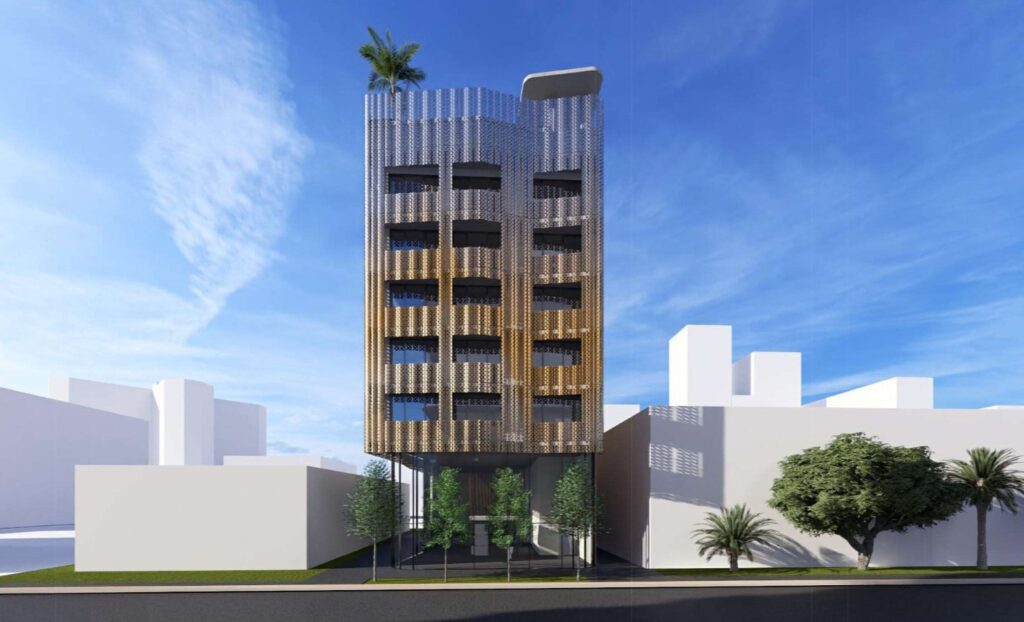
North Beach’s wave of developments is continuing, as plans for a six-story boutique hotel on Abbott Avenue was just submitted. The project, led by South Florida-based Abbott M 6945, calls for 48 boutique hotel rooms on a 6,150 SF site. The new hotel would more than quadruple the room count on the site, replacing the 11-room M Hotel. Scheduled for review by Miami Beach’s Design Review Board on October 23rd, the proposal would rise alongside multiple under construction buildings in the area, including The Ella, 71 Nobe, and more. According to plans submitted to the city, each of the 48 hotel rooms are planned at roughly 300 SF, offered in layouts with either one king bed or two queen beds. While plans remain subject to change, the proposal outlines amenities such as a gym, rooftop pool, rooftop lounge deck, and an exterior plaza. The documents do not specify whether the property will operate under a hotel brand. The ground floor of the project will feature a hotel lobby and 1,106 SF of commercial space. Notably, the plans include no on-site parking. Instead, the developer proposes a bike room and two designated on-street spaces: one for guest drop-offs and another for loading. Surrounding the site, the project also features pedestrian improvements, including wider sidewalks. Designed by M77R Architecture, the hotel is planned to rise 90 FT at its tallest point. Its most distinctive feature will be its colorful perforated metal facade, described by the project team as “a consonant blend of sophisticated yet vibrant materials that speak to the Miami Beach aesthetic. Intentionally placed large glass windows provide for functional design with framed views while ensuring safety and energy efficiency. The clean lines of the structure are accentuated by sleek curves, polished stone and/or concrete elements, creating a clean modern aesthetic.” According to recent satellite imagery from March, the site hasn’t been demolished yet. Demolition work, including permitting, will be fairly easy given the site’s limited size.
West Palm Beach Approves Initial Phase of Rybovich Marina Makeover by Huizenga and Integra
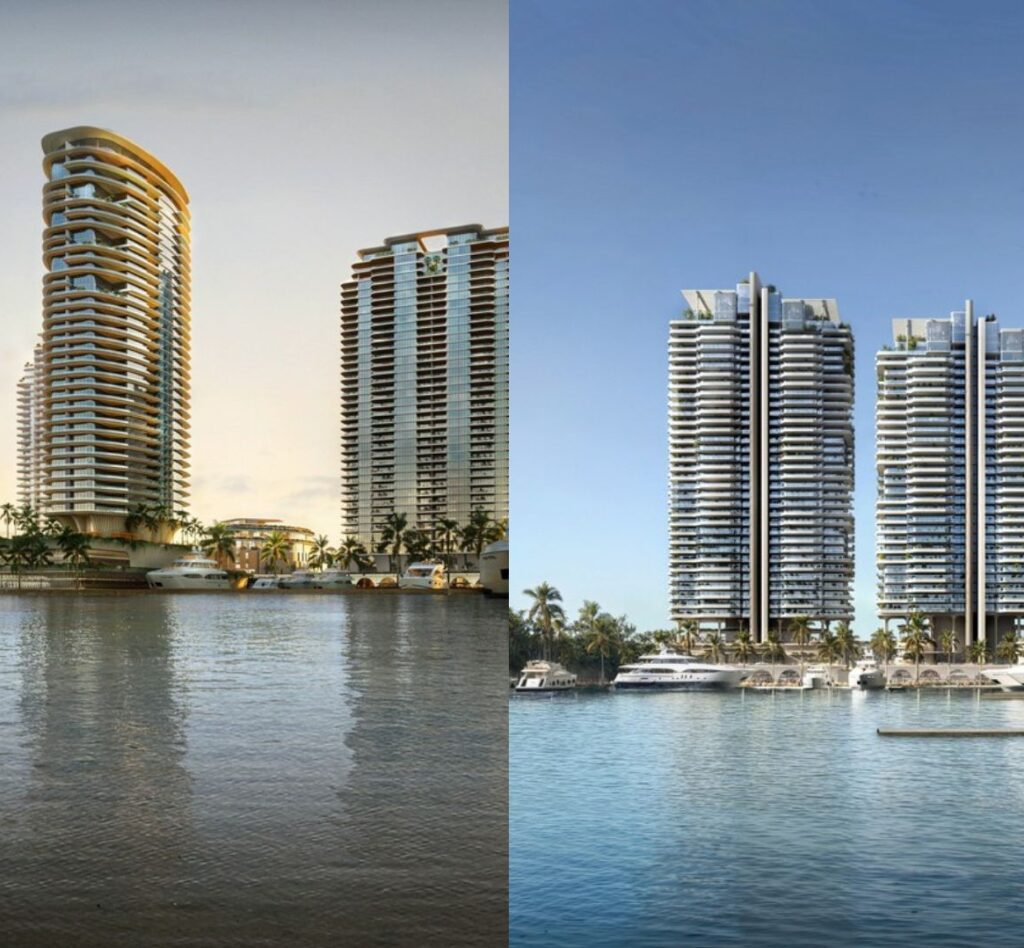
Plans for the redevelopment of the Rybovich Marina are officially advancing, with the Huizenga family and Integra Investments winning approval from West Palm Beach’s planning board. Reviewed on September 16, the proposal outlines a multi-billion-dollar transformation of the city’s waterfront, centered around four condo towers. The first phase, approved at the recent meeting, calls for two multifamily buildings totaling 259 units, while the remaining phases will come before the board at a later date. Overall, despite significant changes to building heights, development features, and structural design, the board found the updated plan acceptable. The first phase of the development centers on two towers rising on the west side of the site. The tallest of the pair will reach 36 stories, climbing to 461 FT at its peak: securing the title of West Palm Beach’s tallest building. This tower is planned to house 112 condominium units and provide 181 parking spaces. Beside it, a 34-story tower will stand at 422 FT, containing 147 units and a significantly larger parking garage with 681 spaces. In addition to the residential towers, the total development will deliver a mix of commercial and recreational spaces. Plans call for 3,355 SF of marine storage, 60,937 SF dedicated to a private club (w/ the option for membership outside the development), and 20,691 SF of office space. Retail and restaurant space will also face the waterfront. A defining feature of the project is its expansive pedestrian promenade, crafted to enhance walkability along the waterfront. This pedestrian-focused element extends onto North Flagler Drive, where wide sidewalks, expansive greenery, and podium setbacks create a more welcoming streetscape than many neighboring developments. In response to design guidelines, the developers also reduced the scale of parking garages from the original plan, lowering their heights by several FT. The tallest garage will now rise to just 50 FT down from 75 FT. Features such as EV charging stations, carpooling areas, bicycle parking, golf cart parking, a bus stop, at least one bike-share station, and more were added through micromobility requirements. Planned at a later, unannounced date, the second phase of the project will introduce two residential towers at slightly shorter heights. One is planned to rise 374 FT while the other will reach 418 FT, together adding 401 residential units to the development. While the proposal was approved, West Palm Beach staff actually recommended denial of one element due to multiple concerns, including the increase in permitted height, the relocation of all retail from North Flagler to the Promenade, and other issues. For example, city requirements call for 25% active use along North Flagler, yet all retail has been shifted to face the waterfront, with over 50% of these ‘active uses’ serving private marina facilities. Hence, staff recommended denial of the site plan.
Vera Fund Proposes Redevelopment of 2810 & 2800 E Oakland Park Boulevard in Coral Ridge
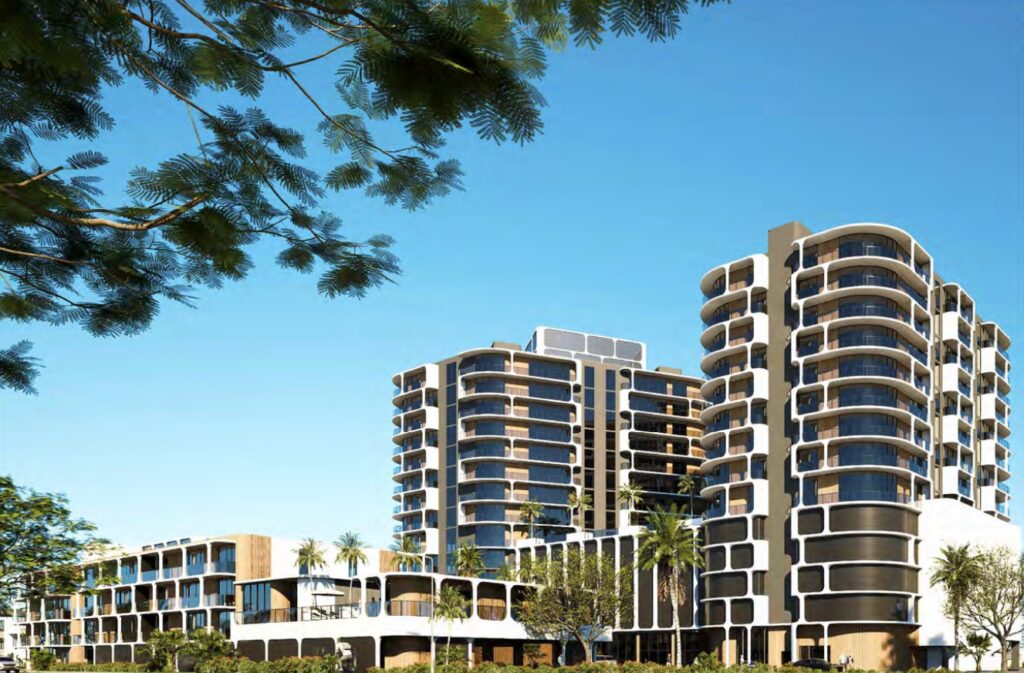
Two parcels in Fort Lauderdale’s Coral Ridge neighborhood are poised for transformation, with two multifamily buildings now in the pipeline. Aventura-based Vera Fund has filed plans to redevelop two sites, one at 2800 East Oakland Park Boulevard, replacing two existing commercial structures with a pair of multifamily high-rises. Just to the south, a surface parking lot at 2810 East Oakland Park Boulevard will be redeveloped into a multifamily low-rise. The projects are set for review before Fort Lauderdale’s Development Review Committee on September 23rd, signaling the next step in Vera Fund’s efforts to move forward with the plans. Zeroing in on 2800 East Oakland Park Boulevard, plans call for two 14-story high-rises connected by a shared parking podium. The development will include 94 residential units across both towers, offered in two-, three-, and five-bedroom layouts. Unit sizes will range from 1,575 SF to 3,510 SF, placing them safely in the luxury category. Residents will also have access to more than 7,000 SF of indoor amenity space, along with a pool deck. The ground floor of the project is planned to include 4,900 SF of commercial space and 3,250 square feet of co-working space, complemented by expanded sidewalks and landscaped greenery. Parking will total 218 spaces, available to both residents and retail patrons. On the south side of the site, the parcel at 2810 East Oakland Park Boulevard is planned for a much smaller building, rising just four stories. The development will include 18 residential units and 36 parking spaces. Unlike the larger structure to the north, this building will be composed entirely of two-bedroom units, ranging from 1,125 to 1,500 SF. Amenities include common areas, a co-working lounge, pool, and more. According to elevations provided by the architect, Idea Architect, the project will feature some of the tallest buildings in the Coral Ridge neighborhood. The pair of twin 14-story towers will rise to 160 FT, while the shorter building will stand at 50 FT. Designed with a contemporary aesthetic, the facades will feature materials such as smooth stucco finishes, tinted glass railings, wood trims, metal mesh, and other modern elements. Vera Fund is seeking entitlements with the intention of selling the property rather than developing it directly. According to Broward County property records, the firm acquired the assemblage in late 2023 for $10.425 million. As of now, no permits have been filed for demolition, site work, or building construction at both properties.
Crews Prepare for Historic Concrete Pour at The Residences at 1428 Brickell on September 19

Crews behind 1428 Brickell are preparing for a historic milestone. On September 19, a massive foundation pour will begin at 8 p.m., led by C & C Concrete Pumping. With Capform as shell contractor, UES handling concrete testing/threshold inspections, and Coastal Construction serving as general contractor, the team will pump an estimated 13,000 cubic yards of concrete into place. The operation is expected to last 30 continuous hours, supported by five concrete pumps working simultaneously. Reinforcement steel is already in place, setting the stage for one of the largest foundation pours in Miami’s history. Comparable pours include the foundations of the Aston Martin Residences, Panorama Tower, and the Waldorf Astoria Miami, all of which exceeded 10,000 cubic yards. Setting the stage for this pour has been a lengthy process. Unlike many Miami developments that rise on vacant land or low-lying structures, 1428 Brickell required the demolition of a multi-story office building totaling roughly 100,000 square feet. The demolition process stretched over several months before crews could begin preparing the site for piling. According to recently submitted building permits, 1428 Brickell will include 197 residential units, a 163,014 SF multi-story parking garage for residents, and an 844 SF professional office/bank space. The tower is planned to rise 70 stories, reaching 867 FT in height, as featured in a previous submission to the Urban Development Review Board (UDRB). Above all, 1428 Brickell is being promoted as one of the most innovative towers in the neighborhood, thanks to its proposed use of photovoltaic glazing. On the building’s west-facing facade, designed without balconies, around 500 solar-integrated windows will generate renewable energy for the tower. According to the developer, the facade is expected to produce thousands of kilowatt-hours annually while also reducing CO₂ emissions. For updates on the foundation pour, the developer is expected to share progress through posts and stories on the 1428 Brickell Instagram account. Update: Pour rescheduled to Friday (Sept 26th).
Turkey-Based Developer Shelton Eyes North Miami for First U.S. Project

A new private residential tower is on the way in North Miami: Shelton Miami. Planned for 1998 NE 135th Street along Little Arch Creek, the 11-story building will feature 18 residential units. Spearheaded by Shelton, a Turkey-based company with completed projects in both Bodrum and Ankara, the firm’s venture in Miami will be the first project outside of Turkey. The Planning Commission of North Miami will review and offer changes for the project on September 18th; however, it’s just one step for the company as final approval lies in the hands of City Council. The project’s 18 planned units will be luxury-oriented, featuring two five-bedroom residences per floor from levels 3 through 11. Each unit will average around 3,000 SF, placing them on the larger end for Miami’s metropolitan market. Because the development exceeds the lot’s allowable density of 8.8 units (or 25 units per acre), the developer is requesting a Conditional Use Permit to allocate nine additional units from the city’s density pool. According to the developer’s website, “Shelton Miami offers the ultimate in seaside living. With its private pier and boat services, it provides an experience akin to a yacht club. In a region like Miami, where supply is low and demand is high, these limited-edition residences promise an exclusive lifestyle. Shelton Miami is not just a living space but also a high-yield investment opportunity.” Beyond its boating amenities, plans for the project also include a swimming pool, sauna, steam room, gym, and more. The ground floor will offer 38 parking spots in a tight layout. By using mechanical parking lifts instead of traditional spaces, each unit is granted more than one parking spot. This approach also reduces the need for a parking ramp, freeing up level 2 for a lobby, amenity space, and other uses. Mechanical lift parking is becoming increasingly common in the Miami region. Designed by Kobi Karp Architects, the building will rise 11 floors to a height of 121 FT. Its facade will feature pure white stucco, frameless glass railings, expansive glazing, wood paneling, and fluted stone accents. If constructed, Shelton Miami would join North Miami’s growing market for both market-rate and luxury housing. Multiple developers have already capitalized on the region’s demand. According to Floridian Development’s database (Floridian Advanced), around 30 residential projects at or taller than five stories are either under construction or proposed in the area.
Casa at FIU, a 297-Unit Student Housing Project, Breaks Grounds in Sweetwater

Construction is officially underway on Casa at FIU, also known as Novu FIU, a massive off-campus housing project in Sweetwater. Touted as a state-of-the-art development for the region, plans by developers WFHP and RAL Companies call for a 297-unit development, enough to house almost 1,000 students. As the project begins construction, a formal groundbreaking ceremony was held last week, bringing together the developers, key partners, and Sweetwater Mayor Jose Diaz. Mayor Jose Diaz, who spoke at the event, called the development an opportunity that will “serve FIU students and further strengthen our community”, beyond that, Casa at FIU “highlights the City of Sweetwater as not only a place to live, but also a city of growth, opportunity, and innovation.” View this post on Instagram A post shared by City of Sweetwater (@cityofsweetwater) Designed by Niles Boston Associates and situated on a narrow assemblage at 10710 SW 5th Street, Casa at FIU will join the growing cluster of student housing high-rises in Sweetwater. Just last summer, Terrazul, another large student housing development blocks away, received approval for occupancy. With Casa at FIU now breaking ground, it marks the next significant addition to the area’s rapidly expanding student housing market. JWR Construction Services, the general contractor for the project, will oversee the project’s completion. Foundation work is set to begin, following the developer’s recent securing of all necessary permits, such as general construction and site work approvals. The existing buildings on-site have already been demolished as well. When Floridian Development first reported on the project a few months ago, Casa at FIU was noted to rise 20 floors and span 676,465 SF. According to Miami-Dade permitting, the estimated construction cost is $105.5 million. Residents will enjoy a range of amenities, including ample parking, a dedicated amenity level on the seventh floor with lounge space, a pool, and more. While a formal construction timeline has not been released, the project is expected to be completed by late 2027 or possibly early 2028.
Pendry Tampa Lands Record-Breaking $520 Million Construction Deal

Pendry Tampa, a luxury hotel and condominium tower planned by Two Roads Development, has just secured $520 million in construction financing. The deal, announced Monday, includes funding from Sculptor Real Estate and Nuveen Green Capital. Construction, led by Florida-based general contractor Coastal Construction, has been at the topic of discussion in the region for weeks. The project has recently overseen slowed on-site activity; now, with financing achieved, the project is back on-track. While the financing is historic for its size, another aspect of the deal is equally noteworthy. Of the $520 million granted, $290 million came from the largest C-PACE transaction in the nation’s history. C-PACE transactions provide developers with long-term financing for energy-efficient and resiliency-focused building improvements, such as water and energy conservation measures, storm infrastructure, and more. In the case of Pendry Tampa, this financing likely supports the tower’s mechanical systems, sustainable energy features, and resiliency upgrades, helping Two Roads Development finance construction costs. According to Hotel Investment Today, Nuveen Green Capital highlighted the significance of the deal, with Ryan Doyle, senior director of originations, saying, “We are thrilled to have closed the largest C-PACE transaction in history, partnering with Two Roads Development and Sculptor Capital on this transformative luxury property that will redefine Tampa’s skyline. This historic milestone showcases the growing sophistication and scale of C-PACE financing and its capacity to support major developments.” The news is both exciting and reassuring for many local real estate enthusiasts, especially given the lot’s history. Over the years, multiple projects on the site have fallen through, including the cancelled Trump Tower Tampa. Pendry Tampa broke ground and began foundation work in late 2023, but construction only reached a few floors above ground before slowing. With financing now in place, the project is set to return to its regular pace. According to Floridian Development’s database, the historic project will rise 38 stories, reaching 444 FT, making it one of Tampa’s tallest developments. Plans call for 200 condominium units, 220 hotel rooms, 656 parking spaces, extensive commercial space, and amenities.